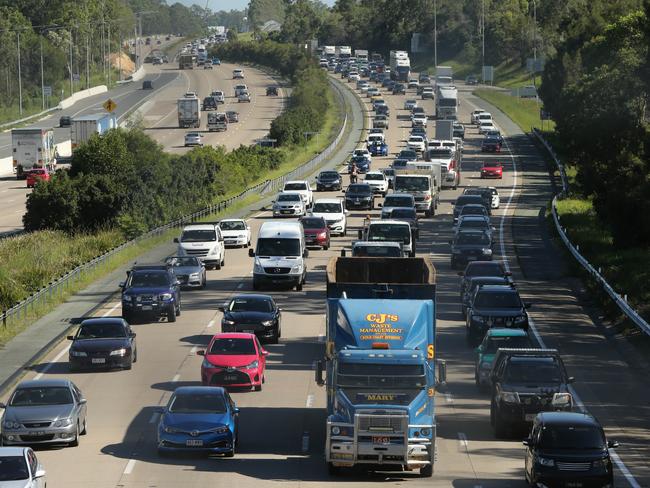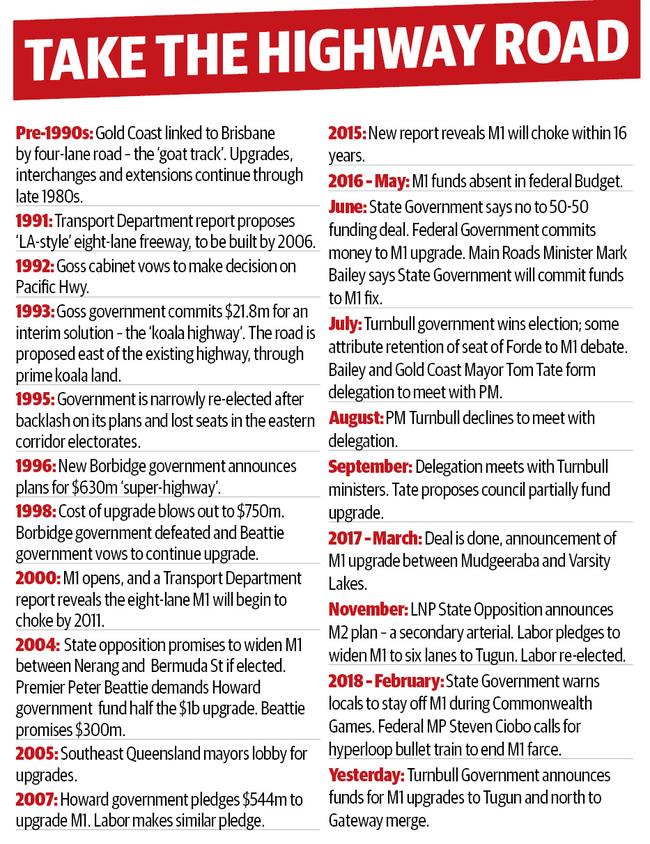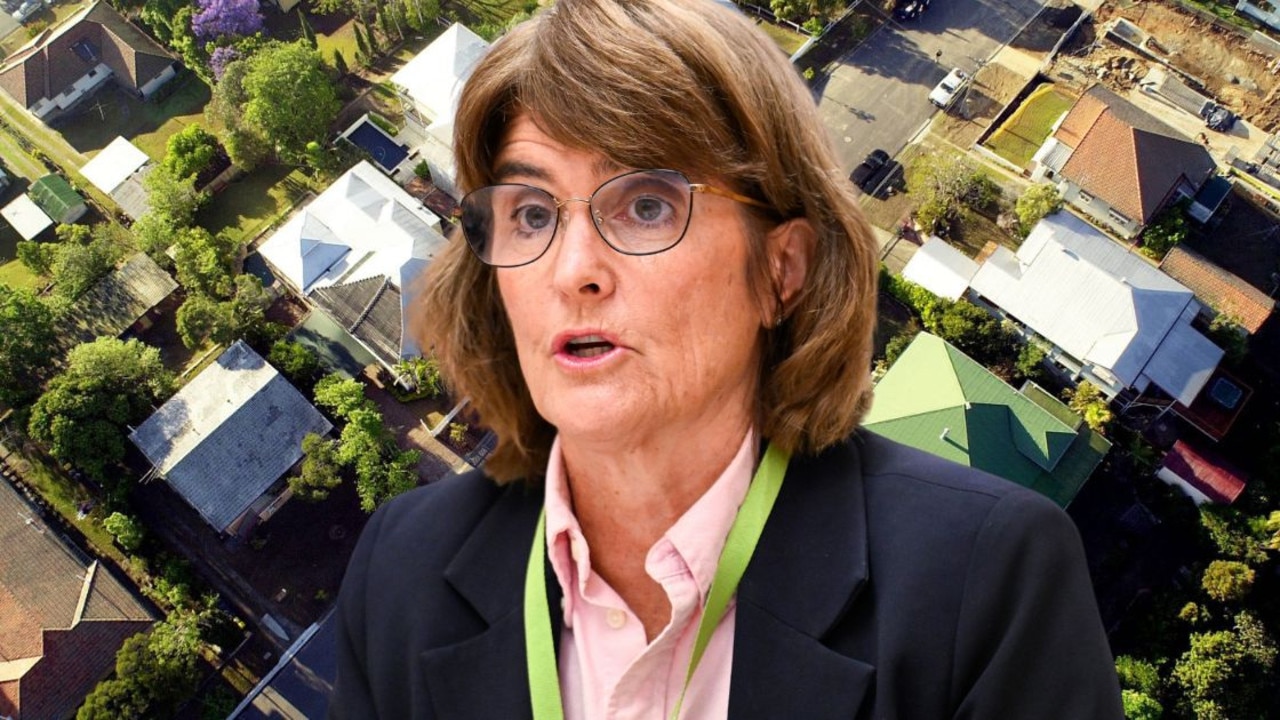M1 Pacific Motorway funding breakthrough means hope at hand
AS commuters cry out for a fix on the M1, our politicians can’t work out who pay, writes Michael Wray.
CM Insight
Don't miss out on the headlines from CM Insight. Followed categories will be added to My News.
AS SPOT fires flared between the state and federal governments yesterday over how to split the bill to fix Queensland’s busiest road, experts advised motorists to ignore the sideshow and follow the money.
The latest stoush flared after Prime Minister Malcolm Turnbull announced a $1 billion splurge to widen the Pacific Motorway section of the M1, which links Brisbane and the Gold Coast.
Turnbull was in Brisbane to spruik his “congestion-busting” plan; however, he revealed the project could only work if the State Government matched him dollar for dollar.
“Historically, the practice has always been for funding on the M1 to be 50/50,” he says.
Transport Minister Mark Bailey immediately rejected that proposal, insisting the road was a federal responsibility and Canberra should pay 80 per cent of the total cost.
RACQ spokesman Paul Turner said the exact same battle broke out during negotiations over the two previous major projects on the southern M1.
Both of those are due to begin construction at the end of the Commonwealth Games, after both sides quietly agreed to a funding mix somewhere in between.
“While there was a lot of argy-bargy, (the state and federal governments) actually ended up coming to the table and getting the job done, so we’re hopeful that they will do that again this time,” he says.
“We’ll start with a fight over 50/50 versus 80/20, but the money’s on the table, so hopefully now the state will be able to sharpen their pencils and get these two jobs done.”

WILL $1 BILLION FIX THE ISSUE?
Months after the southern section of the M1 opened in 2001, the Transport Department predicted it would begin to choke by 2011.
The report highlighted the short shelf-life of infrastructure projects, as they were quickly overwhelmed by soaring population growth.
Turner said the proposed M1 developments coupled with the two projects due to begin after the Games would reduce major bottlenecks and speed up travel.
“Certainly these four projects combined are the priority projects that we have been calling for since at least a decade ago and will make a big difference,” he says.
But he warned the improved traffic flows would not last forever.
“Given that the M1 is the busiest road in Queensland … we will absolutely need to come back and revisit it over the next decades.
“There is no silver bullet to fix this because as you continue to build more roads, it will encourage more people to drive.”
WHAT HAVE THE GOVERNMENTS PROMISED?
There are nearly 15 projects being planned or under construction on the M1, but just four will deliver the real congestion-busting improvements motorists are crying out for.
Two of those are already under construction after the state and federal governments quietly shelved their quarrelling over the funding mix.
Both projects – fixing the Gateway merge at Eight Mile Plains and widening the road between Mudgeeraba and Varsity Lakes – are due to be completed by early 2020.
The Federal Government has put up $115 million to improve the Gateway merge. The total project is estimated to cost $170 to $196 million, with the State Government agreeing to pay for the rest.
Queensland Transport has estimated the widening work on the Gold Coast will cost about $180 million. The Federal Government has pledged $110 million to that project.
For the two projects announced yesterday by Turnbull, the State Government had already set aside $206 million for the Varsity Lakes to Tugun section out of a total expected cost of $1 billion.
The only state money for the extended Gateway merge project is $16 million to develop a business case for future upgrades between Eight Mile Plains and the Logan Motorway.
Another 11 minor projects worth less than $5 million are being planned on the M1.
Mr Turnbull also recently announced a $150 million upgrade to the Bruce Highway section of the M1 north of Brisbane.

WHAT ARE THE ALTERNATIVES?
The Pacific Motorway section of the M1 only has a limited corridor to expand in, so governments are eventually going to have to find new solutions to keep traffic moving.
Turner said building new roads and “relief valves” that could remove local traffic were important, but ultimately a mix of all transport options would be required to solve the problem. He said rail projects alway made a “significant” contribution to easing congestion.
The most-hyped road project is a duplication of the M1, most likely from Daisy Hill at Logan to the Gold Coast.
An RACQ report has predicted building a secondary road between Carrara and Stapylton on the Gold Coast could take up to 60,000 cars off the M1.
Turner said a new road would also provide alternatives if the M1 were blocked.
Gold Coast Mayor Tom Tate said his council spent about $100 million on local roads last year, including improving feeder roads that entered or exited the M1.
Tate said the Gold Coast section of the M1 was becoming a national embarrassment, and until the state and federal governments could stop arguing over funding splits, he would commit “whatever funds we have to keep our road network growing and improving”.


